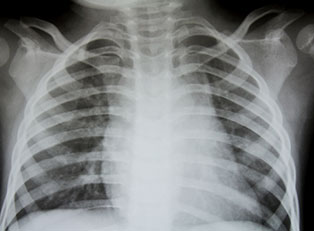The pancreas is a six-inch-long organ located behind the lower part of your stomach. Its function is to secrete the hormones insulin and glucagon that help regulate sugar metabolism and enzymes that aid digestion. When the hormones are not working properly, diabetes is often the result.
What is pancreatic cancer?
Pancreatic cancer occurs when out-of-control cell growth begins in the pancreas. These cells don’t develop into healthy pancreas tissue, but collect together to form lumps called tumors. These tumors don’t allow the main function of the pancreas to continue. Benign tumors usually stay in one spot and don’t grow much, but malignant tumors form when the cancer cells move through the lymph systems or blood to other parts of the body. This is called metastasis and is often not curable. Pancreatic cancer is usually diagnosed late into its development, which results in a five-year survival rate less than 5% of patients.
What are the causes?
The ultimate cause of pancreatic cancer is reproducing cells that do not die. Normal cells grow, divide, and die. When this regular process is interrupted, the result is cancer. Researchers don’t know why this happens, but they have identified several possible risk factors.
- Gene mutation
DNA damage can inhibit the normal life of a cell. It can develop after birth or as a result of heredity.
- Carcinogens
Carcinogens are substances that directly damage DNA, promoting cancer. Some dyes, pesticides, and other chemicals are considered to increase the risk of developing pancreatic cancer. Free radicals may enter your body when you are exposed to carcinogens and attempt to steal electrons form other molecules. This damages cells and blocks their ability to function properly, possibly causing cancerous growths.
- Other factors
Aging, cirrhosis of the liver, stomach infections, diabetes, gingivitis, and chronic pancreatitis are all possible contributing factors to developing pancreatic cancer. Smoking cigarettes, alcohol consumption, little exercise, and obesity increase your risk for pancreatic cancer as well. Diets rich in red meat and fat and lacking in fruits and vegetables can also contribute to your risk.
Symptoms
Pancreatic cancer is called a "silent killer" because the symptoms don’t show in the early stages of the disease, partially because the tumors are too small to show symptoms. Once symptoms appear, they include:
- Yellowing eyes and skin
- Pain in the upper abdomen
- Vomiting, nausea, loss of appetite
- Pale or grey stool
- Significant loss of weight and weakness
Diagnosis
Doctors will request a complete physical exam, blood tests, as well as personal and family medical histories. Imaging tests include:
- Ultrasound
- Endoscopic ultrasound
- Endoscopic retrograde cholangiopancreatography
- Abdominal computerized tomography
- Angiogram
- Barium swallows
- Magnetic resonance imaging
- Positron emission tomography
Treatments
If a physician determines that a patient does, in fact, have pancreatic cancer, there are a number of treatments that will be considered. These include:
- Chemotherapy to stop the cell division process
- Radiation that damages the cells, causing them to die
- Developing treatments that use radioactive bacteria to infect only the cancer cells
- Surgery can cure a patient if the cancer has not metastasized. Once the disease has spread, it is almost impossible to remove all the cancer cells. There are several different types of surgery that are used, depending on where the tumor is on the pancreas.



